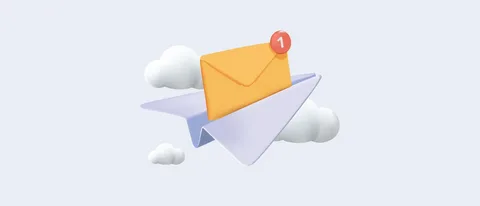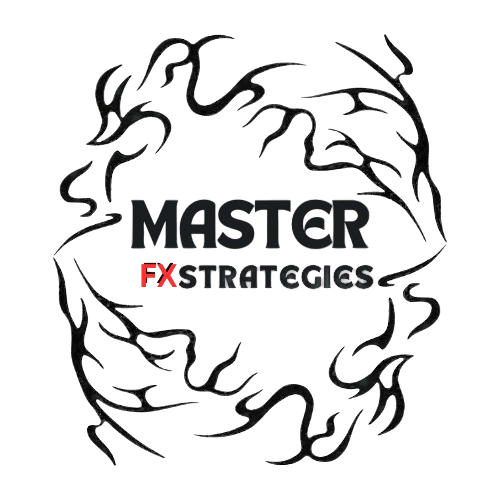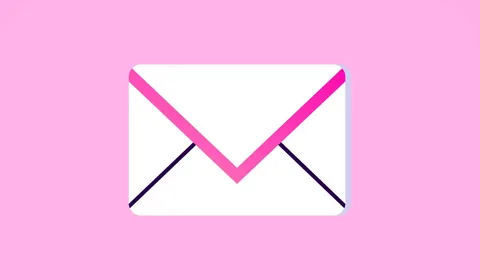In the age of digital minimalism and visual branding, even the tiniest design element can have a significant impact. One such underestimated element is the mail aesthetic icon—a visual representation of messaging or email systems that combines function with form.
From classic envelope symbols to vibrant, animated illustrations, the mail icon has undergone a design revolution. No longer just a tool to indicate unread messages, it now plays a key role in user engagement, brand identity, and overall aesthetic cohesion. In this article, we’ll explore the evolution, significance, and future of the mail aesthetic icon in user interface (UI) and graphic design.
What Exactly Is a Mail Aesthetic Icon?
A mail aesthetic icon is a visual cue—often in the shape of an envelope, letter, or paper plane—that symbolizes communication, usually in the form of email or messaging. But unlike standard system icons, an aesthetic icon emphasizes visual appeal, emotion, and stylistic detail.
The “aesthetic” part reflects a purposeful design choice: color, texture, shape, shadow, animation, and theme are all considered to make the icon feel like a piece of art rather than a generic UI element.
Why Do Aesthetic Icons Matter Today?
1. Digital Branding
Every pixel counts in the digital age. A company or app’s aesthetic plays a key role in user perception. A creatively designed mail icon can say a lot about your brand’s tone—be it playful, professional, futuristic, or nostalgic.
2. User Experience (UX)
Humans are visual creatures. A clean, beautiful icon improves user interaction. Users are more likely to engage with a button that looks polished and intentional than one that feels outdated or generic.
3. Consistency in Design
Modern interfaces demand consistency. A flat, minimalist design paired with a clunky, outdated mail icon breaks visual flow. A well-crafted mail aesthetic icon helps unify the overall look of the interface.
4. Emotional Appeal
Design evokes feeling. A warm, pastel mail icon can create a sense of calm and friendliness, while a glowing neon icon can feel exciting and futuristic. These subtle emotional cues help form user attachment.
Historical Overview: From Utility to Aesthetics
The Early Days: Pure Function
The original mail icons were built for clarity. A simple gray or blue envelope conveyed the basic function—send or receive mail. No frills, just function.
Smartphone Era: Icons Get a Makeover
With the rise of app stores and mobile operating systems like iOS and Android, icons became brand assets. Mail icons became colorful, scalable, and distinct—from Gmail’s red-and-white design to Apple Mail’s envelope and stamp combination.
Flat and Material Design: Return to Simplicity
In the mid-2010s, skeuomorphic design gave way to flat design. Mail icons shed their textures and shadows in favor of sharp lines and solid colors. Google’s Material Design further encouraged this trend.
2020s and Beyond: Aesthetic Reimagined
Now we’ve entered a design phase where minimalism and aesthetics blend. Designers create themed icons—pastel, gradient, animated, or hand-drawn—to enhance the UI experience. The mail icon is often reimagined to match broader design themes like cozy-core, retrofuturism, Y2K, and monochrome.

Popular Aesthetic Mail Icon Styles
Let’s take a look at trending design styles that dominate the world of mail icons today:
1. Pastel/Soft Aesthetic
- Uses muted colors like beige, lavender, baby blue, or peach.
- Often has rounded corners and soft shadows.
- Perfect for lifestyle apps, journaling tools, and personal blogs.
2. Hand-Drawn/Doodle Icons
- Looks sketched or painted.
- Conveys a playful, human touch.
- Popular in education, creative portfolios, or indie websites.
3. Futuristic/Neon Glow
- Dark background with vibrant outlines or glowing edges.
- High-tech appeal.
- Common in crypto apps, developer tools, or gaming UIs.
4. Retro/Vintage Aesthetic
- Uses textures that mimic paper, stamps, or old mailboxes.
- Inspired by analog communication.
- Great for storytelling websites or nostalgia-themed platforms.
5. 3D and Glassmorphism
- Icons with depth, shadow, or transparency effects.
- Uses blur, gradient, and layering.
- Works well in premium design apps or conceptual UI projects.
Design Principles for a Great Mail Aesthetic Icon
When creating or selecting a mail aesthetic icon, certain principles ensure success:
1. Clarity
Even the most artistic design must still be understandable. The user should instantly know it represents messages or email.
2. Balance
Avoid clutter. Maintain the right ratio of detail and white space. A good icon is simple, but not boring.
3. Scalability
The icon should look sharp at 16×16 pixels and still maintain integrity at 512×512 pixels.
4. Theme Cohesion
Icons should fit within the broader theme of the app or website. An overly ornate mail icon might clash with a flat design UI.
5. Emotional Tone
Think about how the icon makes users feel. Should it feel professional, inviting, fun, or calming? The right design will align with your app’s voice.
Use Cases: Where Aesthetic Mail Icons Shine
1. Mobile Home Screens
Personalization is key. Custom aesthetic icon packs are a trend in iOS and Android home screen setups, where users change default icons to match a specific vibe.
2. Contact Sections on Websites
A unique mail icon on a contact page can elevate the look and make your site more memorable.
3. Productivity Apps
Tools like Notion, ClickUp, or Monday.com can incorporate aesthetic icons in task views or message notifications.
4. Digital Portfolios
Designers and artists often use styled mail icons in portfolios to reflect their unique taste and make “contact me” sections stand out.
5. Notification Badges
Aesthetic mail icons often include elegant ways to show message counts (e.g., soft badges, animated alerts, or floating numbers).
How to Create or Customize a Mail Aesthetic Icon
If you’re interested in creating your own, here’s a quick roadmap:
Step 1: Define Your Aesthetic
Decide on the overall vibe—minimal, vintage, cute, moody, etc.
Step 2: Choose Your Tools
Use Figma, Illustrator, Canva, or Procreate depending on your style and skill level.
Step 3: Create the Base Shape
Start with a basic envelope or paper shape. Make sure it communicates “mail” at first glance.
Step 4: Add Details
Incorporate aesthetic elements—like gradients, shadows, or hand-drawn lines.
Step 5: Test on Different Backgrounds
Make sure it works on light, dark, or patterned surfaces.
Step 6: Export at Multiple Sizes
Save icons in scalable formats like SVG or PNG in multiple resolutions.
Trends Shaping the Future of Icon Design
As design evolves, so will mail icons. Here’s what’s on the horizon:
- Dynamic Icons: Real-time animated mail icons that flutter, pulse, or glow when messages arrive.
- AI-Generated Styles: AI tools can produce custom icons in various styles in seconds.
- Hyper-Personalization: User-generated aesthetic packs where icons match a user’s interests (e.g., floral, sci-fi, anime).
- Responsive Icons: Icons that change based on themes, time of day, or user mood settings.
FAQs About Mail Aesthetic Icons
Q1: What’s the difference between a regular mail icon and an aesthetic one?
A regular mail icon focuses only on functionality—simple, usually grayscale, and basic. An aesthetic icon adds beauty, emotion, and brand style to that functionality.
Q2: Can I use aesthetic mail icons commercially?
Yes, but be sure to check licensing. Many designers offer free icons with personal or commercial licenses. Always read usage terms if you didn’t design the icon yourself.
Q3: Are animated mail icons better for engagement?
Subtle animations can enhance engagement by drawing attention to unread messages or changes. However, overuse or fast animations may annoy users.
Q4: What is the best color for a mail aesthetic icon?
There’s no single best color—it depends on the mood and context. Soft colors are calming; bold colors demand attention; monochromes are clean and modern.
Q5: How can I match my icon to my website’s design?
Stick to your site’s existing palette, font styling, and general UI tone. Use icon packs that offer variations to fit both light and dark modes.
Q6: Can I design my own mail icon if I’m not a designer?
Yes! Tools like Canva and Figma are beginner-friendly. You can start with templates and tweak colors, shapes, and effects to match your vision.
Q7: Why are mail icons always shaped like envelopes?
The envelope is a universally recognized symbol for messages. Even in the digital age, it’s still the most intuitive shape for representing communication.
Final Thoughts
The mail aesthetic icon may be small, but its role in design and communication is powerful. It reflects not just functionality, but personality, emotion, and attention to detail. Whether you’re designing a sleek corporate dashboard, a cozy lifestyle blog, or a fun mobile app, the right mail icon can elevate your interface.
As trends shift and visual standards rise, aesthetic icons remind us that even the most ordinary elements can be artfully transformed. All it takes is thoughtful design—and perhaps a splash of creativity.
More Info: masterfxstrategies

